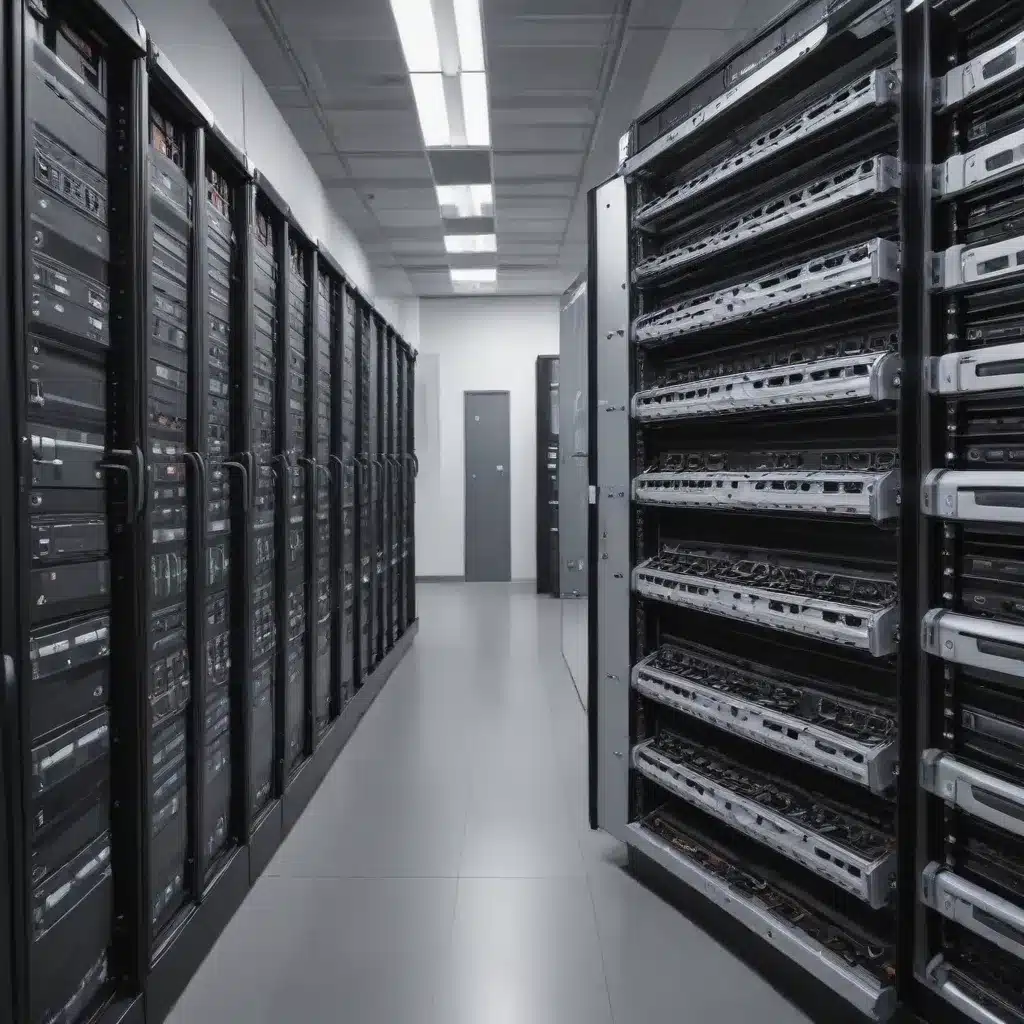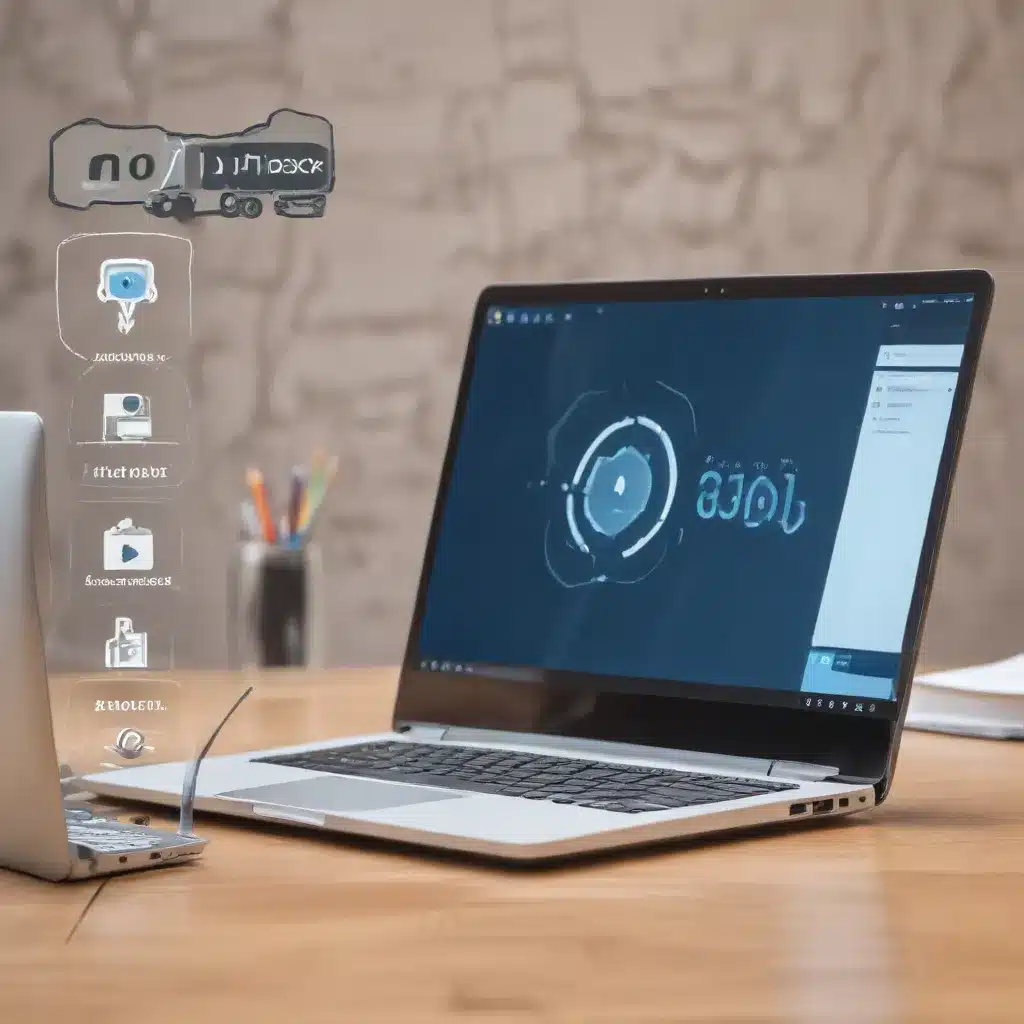Optimizing System Performance: Best Practices for Computer Maintenance
As an experienced IT specialist, I’ve had the privilege of working with a wide range of computer systems and infrastructure over the years. One of the most common issues I encounter is poor system performance, which can severely impact productivity and user experience. However, with the right approach and attention to detail, you can significantly enhance the speed and efficiency of your computer systems.
One of the primary keys to maintaining optimal system performance is regular maintenance. This involves tasks like clearing out unnecessary files and applications, defragmenting your hard drive, and keeping your operating system and software up-to-date. By regularly cleaning out the digital clutter, you can free up valuable storage space and improve system responsiveness.
Another crucial aspect of computer maintenance is managing your system’s temperature. Overheating can lead to throttling, system crashes, and even hardware failure. Ensuring proper airflow, regularly cleaning fans and vents, and applying thermal paste can all contribute to keeping your computer running at its best.
Speaking of hardware, it’s essential to monitor the health of your system’s components, such as the hard drive, memory, and processor. Tools like SMART (Self-Monitoring, Analysis, and Reporting Technology) can provide valuable insights into the condition of your hardware, allowing you to proactively address any potential issues before they become major problems.
One often-overlooked aspect of computer maintenance is the importance of backups. Regularly backing up your critical data, whether to an external hard drive, cloud storage, or a network-attached storage (NAS) device, can protect you from the devastating consequences of data loss. Trust me, the time and effort you invest in a robust backup strategy will pay off immensely if you ever need to restore your files.
Safeguarding Your Digital Realm: Cybersecurity Strategies for IT Professionals
As an IT specialist, I can’t stress enough the importance of prioritizing cybersecurity in today’s digital landscape. The threat landscape is constantly evolving, and it’s crucial to stay vigilant and implement robust security measures to protect both your personal and professional systems.
One of the fundamental pillars of cybersecurity is strong access control. This includes enforcing the use of complex passwords, implementing multi-factor authentication, and carefully managing user permissions. By ensuring that only authorized individuals can access your systems, you significantly reduce the risk of unauthorized entry and potential data breaches.
Another essential cybersecurity practice is keeping your software and operating systems up-to-date. Software vendors frequently release patches and updates to address vulnerabilities, so it’s crucial to apply these updates in a timely manner. Neglecting to do so can leave your systems exposed to malicious actors who may exploit these known weaknesses.
Firewalls are another crucial component of a comprehensive cybersecurity strategy. By carefully configuring your firewall settings, you can control the flow of traffic in and out of your network, effectively blocking unauthorized access and preventing the spread of malware. Regularly reviewing and updating your firewall rules is key to maintaining a robust defense.
Proactive monitoring and logging are also vital for detecting and responding to security incidents. By implementing robust logging mechanisms and continuously analyzing system logs, you can quickly identify anomalous activity and take appropriate action to mitigate threats. Investing in a reliable security information and event management (SIEM) solution can greatly enhance your ability to detect and respond to security incidents.
Regularly conducting vulnerability assessments and penetration testing can also help you identify and address weaknesses in your IT infrastructure. These practices can uncover potential entry points that malicious actors could exploit, allowing you to implement the necessary countermeasures before they can be compromised.
Embracing the Future: Technological Advancements Shaping the IT Industry
As an IT specialist, I’ve had the privilege of witnessing the rapid pace of technological advancements that have transformed our industry. From the rise of cloud computing to the increasing prominence of artificial intelligence (AI) and machine learning (ML), the IT landscape is constantly evolving, and it’s crucial for professionals to stay informed and embrace these innovations.
One of the most significant technological shifts in recent years has been the widespread adoption of cloud computing. By migrating to cloud-based infrastructure and software-as-a-service (SaaS) solutions, organizations can enjoy greater scalability, improved accessibility, and reduced maintenance overhead. Additionally, cloud-based disaster recovery and backup solutions offer enhanced data protection and business continuity capabilities.
Another area of tremendous growth and innovation is the field of artificial intelligence and machine learning. These technologies are being increasingly integrated into a wide range of IT applications, from automated IT support and predictive maintenance to cybersecurity threat detection and response. By harnessing the power of AI and ML, IT professionals can streamline operations, enhance decision-making, and proactively address potential issues before they escalate.
The rise of the Internet of Things (IoT) is also transforming the IT landscape, with connected devices becoming ubiquitous in both personal and professional settings. As the number of IoT devices continues to grow, IT professionals must grapple with the challenges of secure device management, data integration, and end-to-end system optimization.
Advancements in data analytics and visualization tools are also revolutionizing the way we approach IT decision-making and problem-solving. By leveraging powerful data analytics platforms, IT professionals can gain deeper insights into system performance, identify trends, and make more informed, data-driven decisions.
One of the most exciting developments in the IT industry is the increasing emphasis on sustainability and environmental responsibility. From energy-efficient data centers to the adoption of renewable energy sources, IT professionals are playing a crucial role in reducing the environmental impact of our industry. By embracing green IT practices, we can not only contribute to a more sustainable future but also realize cost savings and operational efficiencies.
Empowering Users: Tips and Strategies for Optimal IT Support
As an IT specialist, I’ve had the privilege of working closely with a diverse range of users, from tech-savvy professionals to those who are less experienced with technology. One of the most rewarding aspects of my job is empowering users to make the most of their computer systems and IT resources.
One of the key strategies I’ve found to be effective is fostering a culture of digital literacy and self-sufficiency. By providing comprehensive training and educational resources, users can develop a better understanding of their computer systems, common troubleshooting techniques, and the importance of regular maintenance. This not only helps to reduce the burden on IT support teams but also empowers users to take a more proactive role in maintaining the health and performance of their devices.
Another important aspect of user support is the implementation of intuitive and user-friendly IT systems. By designing interfaces and workflows that are easy to navigate, IT professionals can help to minimize the frustration and confusion that often accompanies technological challenges. This can involve everything from optimizing software applications to streamlining access to IT resources and support.
In today’s rapidly evolving IT landscape, it’s crucial for users to stay informed about the latest cybersecurity threats and best practices. As an IT specialist, I make it a priority to educate users on topics such as phishing, social engineering, and the importance of strong password hygiene. By equipping users with the knowledge and tools to identify and mitigate security risks, we can significantly reduce the likelihood of successful attacks.
One of the hallmarks of effective IT support is the ability to communicate complex technical concepts in a clear and accessible manner. As an IT specialist, I’ve found that using plain language, providing visual aids, and drawing upon real-world analogies can go a long way in helping users understand and retain important information. By fostering open and transparent communication, IT professionals can build trust and establish themselves as valuable partners in the user’s technological journey.
Finally, it’s crucial for IT support teams to maintain a customer-centric mindset and a genuine desire to help. By being attentive to user needs, demonstrating empathy, and going the extra mile to resolve issues, IT professionals can create a positive and productive support experience that leaves users feeling valued and empowered.
Conclusion: Embracing the Future of IT with Confidence and Expertise
As an experienced IT specialist, I’ve had the privilege of witnessing the dynamic evolution of our industry, from the importance of computer maintenance and cybersecurity to the exciting advancements that are shaping the future of technology. Throughout my career, I’ve dedicated myself to staying at the forefront of industry trends, continuously expanding my knowledge, and sharing my expertise with both users and fellow IT professionals.
One of the things that has always driven me in this field is the desire to empower others and help them unlock the full potential of their computer systems and IT resources. Whether it’s optimizing system performance, implementing robust cybersecurity measures, or embracing cutting-edge technological innovations, my goal has always been to provide practical, user-focused solutions that make a tangible difference in people’s lives.
As we look to the future, I’m excited to see the continued evolution of the IT industry and the transformative impact it will have on businesses, communities, and individuals alike. From the rise of cloud computing and the Internet of Things to the growing influence of artificial intelligence and machine learning, the landscape is changing rapidly, and it’s up to IT professionals like myself to stay ahead of the curve and guide our organizations and users through these technological shifts.
By adhering to industry standards, prioritizing cybersecurity, and embracing the latest advancements, we can not only enhance the efficiency and performance of our IT infrastructure but also contribute to a more sustainable, secure, and technologically advanced future. And as we continue to empower users with the knowledge and tools they need to thrive in the digital age, I’m confident that the IT industry will play an increasingly vital role in shaping the world around us.
So, whether you’re an IT professional looking to stay ahead of the curve or a user seeking to make the most of your computer systems, I encourage you to explore the wealth of resources and best practices available on https://itfix.org.uk/. Together, we can elevate the IT landscape and unlock new levels of innovation, productivity, and security.













